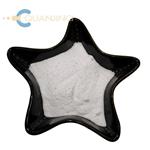
Metoprolol
- Product NameMetoprolol
- CAS37350-58-6
- CBNumberCB4165974
- MFC15H25NO3
- MW267.36
- EINECS253-483-7
- MDL NumberMFCD00599534
- MOL File37350-58-6.mol
Chemical Properties
| Boiling point | 410.55°C (rough estimate) |
| Density | 1.0281 (rough estimate) |
| refractive index | 1.5000 (estimate) |
| CAS DataBase Reference | 37350-58-6(CAS DataBase Reference) |
| FDA UNII | GEB06NHM23 |
| NIST Chemistry Reference | Metoprolol(37350-58-6) |
Safety
| Symbol(GHS) |
  
|
| Signal word | Danger |
| Hazard statements | H335-H315-H302-H228-H361-H319-H332 |
| Precautionary statements | P264-P270-P301+P312-P330-P501-P210-P240-P241-P280-P370+P378-P261-P271-P304+P340-P312-P264-P280-P302+P352-P321-P332+P313-P362-P264-P280-P305+P351+P338-P337+P313P-P201-P202-P281-P308+P313-P405-P501 |
| Hazardous Substances Data | 37350-58-6(Hazardous Substances Data) |


